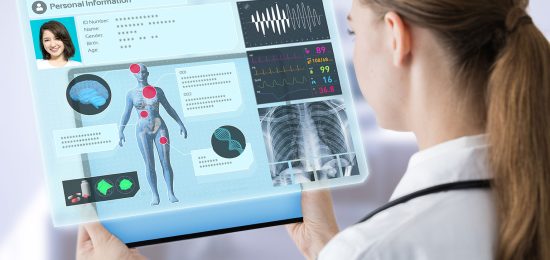
Services
Overview
Ejyle has deep technical expertise, domain knowledge, robust accelerators, and built-in agile culture to design, build, and deliver modern and high-performance applications across different platforms. We also transform legacy systems into modern applications which can make a world of difference in streamlining business operations and enhancing value.
Our architects and engineers have expertise in modern development platforms, open-source packages, solution architecture, design patterns, and DevOps processes with the ability to build applications, services, and APIs that meet the needs of our clients.
Application Development Offerings
Web Application
Development
We develop responsive web applications that run consistently across different browsers, are accessible to all users, load fast, and offer great user experience. We build web applications across different paradigms including single-page applications (SPAs).
Mobile Application
Development
We build native and cross-platform mobile applications for iOS and Android that engage users, offer good user experience, and follow individual platform design guidelines. The applications we build take advantage of device capabilities and features efficiently.
APIs & Services
Development
We build secure and scalable RESTful APIs and web services across different platforms with universal capabilities like OAuth, throttling, sorting, and filtering. We write robust, detailed, and developer-friendly documentation to ensure smooth implementation.
Challenges & Our Solutions How we solve typical application development challenges
We deploy various performance optimization techniques such as code minification, image compression, lazy loading, and caching. In an application’s front-end, we reduce unnecessary requests and improve rendering speed.
We create user personas and analyze user behavior to understand end-user’s requirements and preferences. We create wireframes and prototypes to iterate on the design. Implement responsive design principles to ensure the interface works well across various screen dimensions and orientations.
We implement strong authentication mechanisms, input validation, and data encryption. We use the latest stable versions of well-known libraries and frameworks to minimize security vulnerabilities. We embed SAST and DAST into our DevOps processes in order to continuously test application security.
We use responsive design principles when designing and building UI. We also use tools like BrowserStack, LamdaTest, SeeTest, etc. to test and verify compatibility across different browsers and operating systems.
We use various architectural and design patterns that make an applicable horizontally and vertically scalable to accommodate varying loads. We also have expertise in designing and building microservices for easier scaling of specific components.
We implement version control, automated testing, continuous integration/continuous deployment (CI/CD) pipelines to ensure controlled changes and updates.
We follow web accessibility guidelines (such as WCAG) to make an application perceivable, operable, understandable, and robust. We use semantic HTML, provide alternative text for images, and ensure keyboard navigation is supported.
Application Modernization Offerings
Replatforming
We move a legacy application to a more up-to-date platform while making minimal changes to the application's architecture. Migrating from on-premises servers to a cloud-based infrastructure is an example of this service. Replatforming often improves scalability and reduces infrastructure cost.
Refactoring
We restructure the codebase of a legacy application without changing its external behavior. We aim to improve code quality, maintainability, and efficiency. This can include reorganizing code, optimizing algorithms, and reducing / removing technical debt.
Re-architecting
We make significant changes to a legacy application's architecture to leverage modern design patterns, tools, and technologies. This could include transitioning from a monolithic architecture to microservices or containerization for better scalability and maintainability.
UI Redesign
We update the user interface and enhance the user experience that can make a legacy application more appealing and user-friendly. This often involves adopting responsive design, improving navigation, and optimizing workflows.
Containerization
We package an application and its dependencies into a container for consistent deployment across different environments. We use orchestration tools like Kubernetes to help manage and scale containers efficiently.
Data Migration
We migrate data from legacy systems to modern data storage solutions, like cloud-based databases or data lakes. It can also include transforming and cleansing data for better quality and accessibility.
Challenges & Our Solutions How we solve typical application modernization challenges
We conduct a thorough code audit to understand the existing system. Gradually refactor and modularize the code to improve maintainability. Implement automated testing to catch regressions during modernization.
We develop a robust data migration strategy that includes data cleansing, transformation, and validation. Use ETL tools to streamline the process.
We utilize middleware or APIs to facilitate smooth integration between new and old components. We implement an API-first approach to decouple systems and enable easier communication.
We identify performance bottlenecks using profiling tools. We optimize code, database queries, and server configurations. Consider containerization or microservices architecture for improved scalability.
We clearly communicate the benefits of modernization to stakeholders. We involve them in the decision-making process and provide training to ensure a smooth transition.
We plan a phased approach to modernization, focusing on critical components first. We implement backup and rollback strategies to minimize disruptions.




